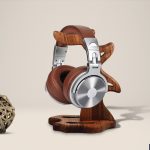
Choosing the right audio format for your music can be a difficult decision. There are many diferent formats to choose from, including FLAC and AIFF.
Both of these formats have their own advantages and disadvantages, so its important to understand the differences between them before making a choice.
In this article, we’ll take a look at the pros and cons of both FLAC and AIFF files, as well as which one is best suited for specific uses.
By the end of this article, you should have all the information you need to make an informed decision about which audio format is right for you.
Overview Of FLAC & AIFF
FLAC (Free Lossless Audio Codec) is an audio file format that can compres and decompress audio data without sacrificing any quality. It offers a high-quality sound with a small file size, making it a great choice for storing music files.
AIFF (Audio Interchange File Format) is an uncompressed digital audio format developed by Apple. It’s comonly used to store and transfer large amounts of audio data due to its high fidelity and lack of compression. Apart from that, I also get asked a lot about the differences between AAC vs FLAC, but that’s not today’s topic, so let’s see what the key differences between FLAC & AIFF are.
FLAC vs AIFF – Key Differences
FLAC (Free Lossless Audio Codec) and AIFF (Audio Interchange File Format) are both audio file formats used for storing digital audio data. Both formats have their own advantages and disadvantages, well take a closer look at the differences between FLAC and AIFF and determine a winer in each category.
Compression
FLAC is a lossless compresion format, which means that the audio data is compressed without any loss in quality. This results in smaller file sizes compared to the original audio, making FLAC a popular choice for music enthusiats and audiophiles who want to store their music collections without sacrificing quality.
On the other hand, AIFF is an uncompresed format, which means that the audio data is not compressed. This results in larger file sizes compared to FLAC, but the audio quality is identical to the original source.
File size
Since FLAC uses lossless compression, it typically results in smaller file sizes compared to AIFF. This makes FLAC a more convenient option for storing large music collections, as it requires less storage space.
However, AIFF’s larger file sizes also have their own advantages. The lack of compresion means that there is no loss in quality, and the audio data is exactly the same as the original source.
Compatibility
FLAC is a more widely supported format and is compatible with a wider range of devices, software, and platforms. This makes it an ideal choice for those who want to play their music on a variety of devices and platforms, without worrying about compatiblity issues.
On the other hand, AIFF is widely used on Apple devices and software, and is natively supported by many professional audio applications. This makes it a popular choice for those who use Apple devices or professional audio software.
Quality
Both FLAC and AIFF offer high-quality audio, but FLAC is generally considered to be of slightly better quality due to its losless compression. The compression results in smaller file sizes without sacrificing quality, and the audio data is exactly the same as the original source.
However, the difference in quality between the two formats is usually not noticeable to the average listener as AIFF’s uncompresed audio data also results in identical quality to the original source, making it a suitable choice for those who prioritize audio quality.
Metadata
Both FLAC and AIFF support the storage of metadata, such as album information and cover art. This makes them suitable for organizing large music collections and ading information to audio files.
However, FLAC has better support for metadata compared to AIFF, making it a better option for those who want to organize their music collections in detail.
In conclusion, the choice between FLAC and AIFF depends on the specific needs and reqirements of the user. If file size and compatibility are a concern, FLAC is the better option.
However, if audio quality and metadata are a priority, AIFF may be the better choice. Regardless of the format chosen, both FLAC and AIFF offer high-quality audio and suport for metadata, making them suitable choices for storing digital audio data.
Converting Between The Formats

So, both these formats can be converted to one another, and the procedure remains the same. Check out the steps down below where I will mention the convert from FLAC to AIFF.
Have in mind that the converting of AIFF to FLAC follows the same (on the parts that is written FLAC make it AIFF).
Let’s convert them!
Choose a conversion software: There are several options available for converting FLAC to AIFF, including both free and paid options. Some popular choices include FFmpeg, XLD, Audacity, and others. Its important to choose a software that is compatible with your operating system and has a user-friendly interface.
Install the software: If you’ve chosen a free option such as FFmpeg, you can simply download the software from its website and instal it on your computer. If youve chosen a paid option, you will need to purchase it and follow the instructions for installation.
Load FLAC files: Once you’ve instaled the software, launch it and select the FLAC files you want to convert. You can either drag and drop the files into the software, or use the softwares file browser to select them. By doing all of this, you might also end up asking what the difference is between 320kbps vs FLAC, and having information on these types of things never disappoints.
Set the output format: The next step is to set the output format as AIFF. This can typically be done from the software’s preferences or settings menu, just make sure that the setings are configured corectly, as the quality of the output file will depend on it.
Start the conversion: Once you’ve set the output format, click the convert buton to start the conversion proces. The software will convert the FLAC files to AIFF format, which may take a few minutes depending on the size of the files and the performance of your computer.
Save the AIFF files: When the conversion proces is complete, the software will save the AIFF files to a location of your choice but have in mind that it is important to save the files in a safe and easily accessible place for future reference.
Conclusion
Both FLAC and AIFF have their own unique advantages and disadvantages. If you’re looking for a lossless audio format with a small file size, then FLAC is the best choice.
On the other hand, if you need a large amount of quality audio data with no compresion, then AIFF is your best bet. Generally speaking, people also tend to convert FLAC to ALAC, they are intertwined in some ways.
Ultimately, it comes down to personal prefrence and what fits your needs the most when deciding which one is right for you.
With this information in mind, you should now be able to make an informed decision about which format is best suited for your audio files! Good luck!
Sound Technician
I’m a sound technician, ensuring that your events and shows are heard loud and clear. Crafting audio broadcasts, studio recordings, and live mixes with finesse to provide the best quality sound experience.





